An early medieval church stood here as early as the 7th century. It was built on the remains of a Roman thermal bath and a Gallo-Roman temple. The oldest parts of today's church originate from this church of St. Arbogast, which was donated by King Dagobert I. The church was built in the 7th century.
Dagobert I was a powerful Merovingian king of the Franks. From 632 he had Burgundy and Aquitaine under his rule. As king he made Paris his residence and he is buried in St Denis.
The church he founded here was enlarged several times in the Middle Ages. The most critical time for the church was the Reformation. The Gothic altars and figures were destroyed and the frescoes painted over in white. In the end, this overpainting saved the valuable medieval frescoes until the 19th century. Then they were badly damaged by the application of plaster. They reappeared in 1932, but were not thoroughly restored until 1976-1981.
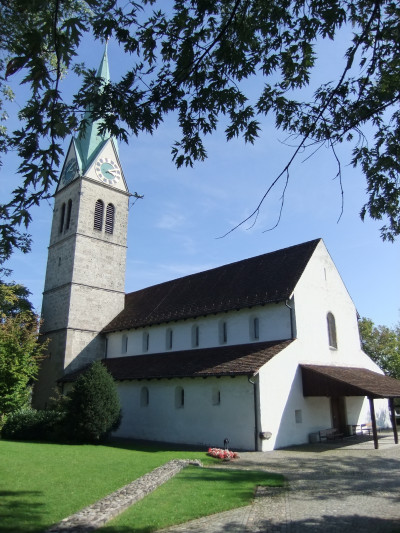
This is how the church looked in late summer 2011. In the foreground you can see the remains of Roman foundation walls embedded in the ground.

The aisle roofs show the original Romanesque slope. The roof over the nave was raised in the Gothic period. The tower dates from 1509 and the copper roof is more recent.
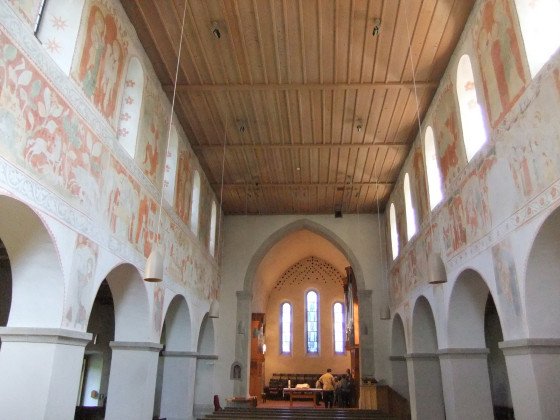
View from the west entrance to the choir. Romanesque frescoes can be seen on the walls.
On the north wall, male saints are depicted in the upper strip and the story of St. Arbogast in the middle strip.
On the south wall there are female saints and below them images from the life and passion of Jesus.
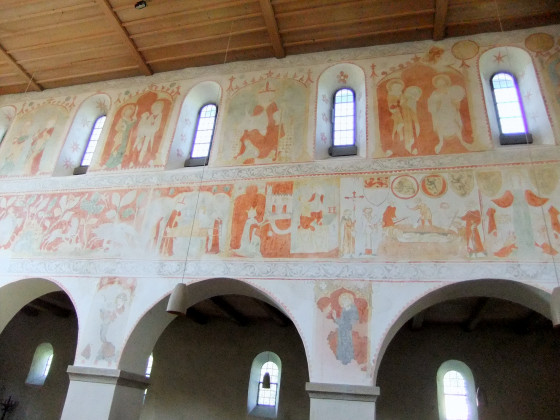
Frescoes on the north wall
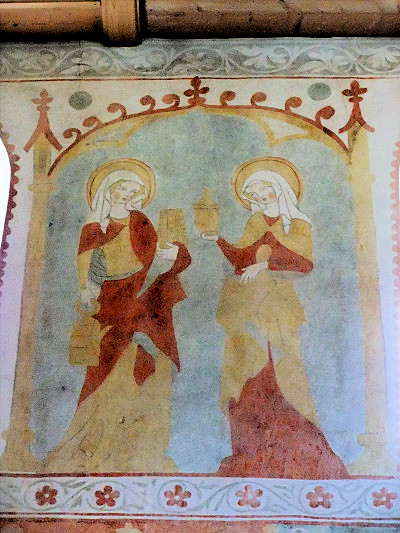
Verena and Magdalena on the south wall.
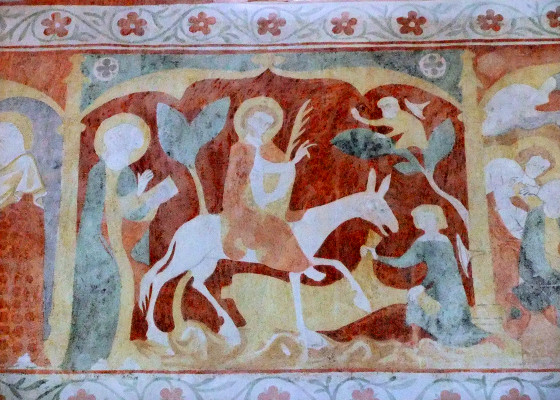
The Entry of Jesus into Jerusalem
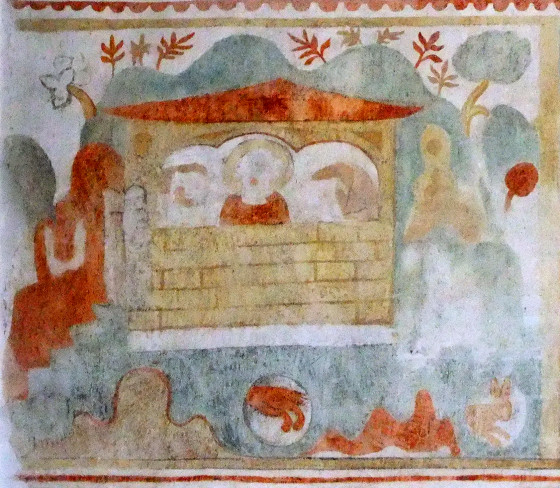
Saint Arbogast founds the monastery of Surburg in Alsace
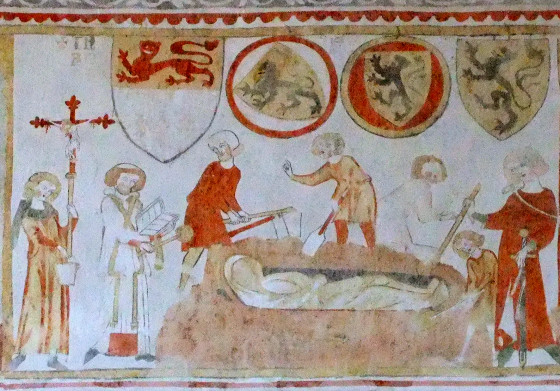
Bishop Arbogast is laid in the grave.
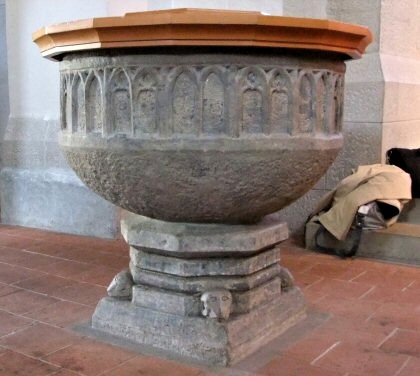
Gothic baptismal font, early 14th c.